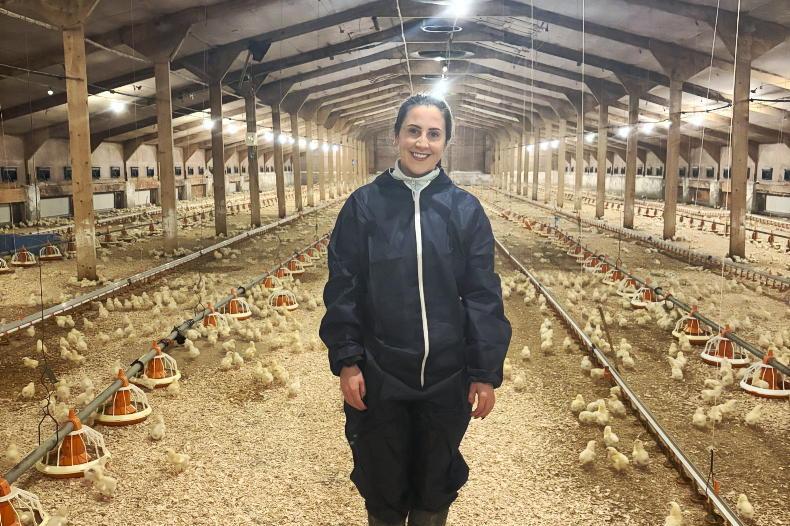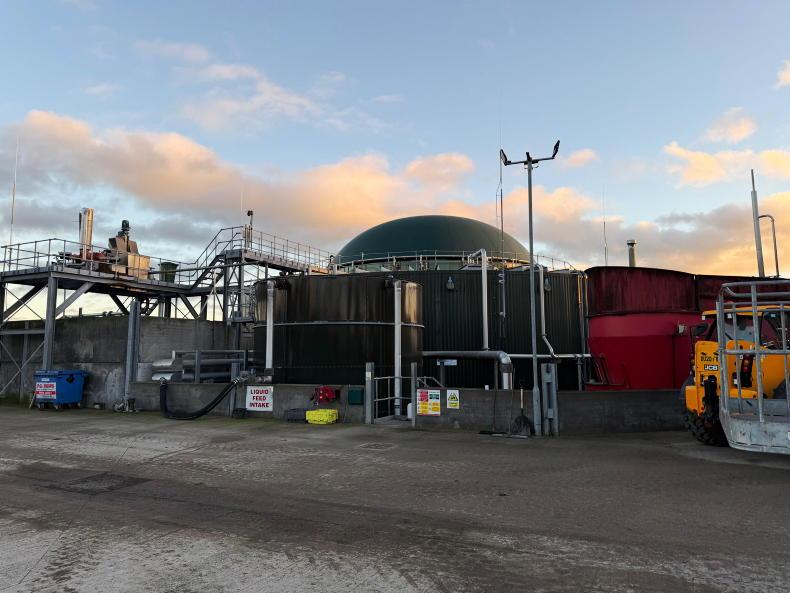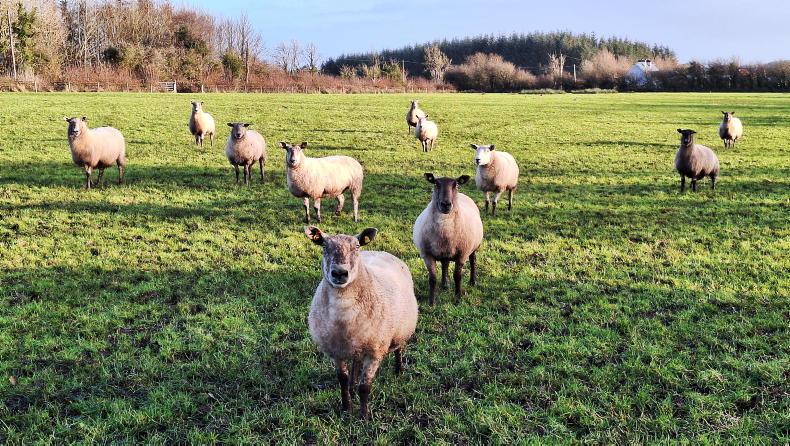Ireland’s largest anaerobic digestion (AD) plant, which won’t use feedstock categorised as waste, has received approval from Kildare County Council. Evergreen Agricultural Enterprises Ltd was granted planning permission late last month for an AD plant located near Monasterevin, Co Kildare.
Spanning nearly 20 acres, the plant will require up to 165,000t of feedstock each year to produce biogas, which will be upgraded to biomethane for injection into the gas grid.
The plant will produce enough renewable gas to supply the equivalent of 7,500 homes. It will also produce CO2 gas and biofertiliser.
The majority of the feedstock will come from Ireland’s distillery and brewery industry, specifically in the form of spent grains. Spent grain is the material left over from malted barley after it’s been mashed to extract the protein, sugar, and nutrients.
While not particularly high in biogas yield, distillers’ and brewers’ grains are already used in biogas production and animal feed.
Speaking to the Irish Farmers Journal, Patrick Meade, one of the three partners behind the project, explained that there is an estimated 500,000t of spent grains available in Ireland each year.
While much of this is used as animal feed in the winter months, demand from the livestock sector is low in the summer months. He believes that their AD plant will bridge the gap in demand and doesn’t think it will impact the availability of supply to livestock farmers when they need it.
The plant will also use an amount of yeast and discarded beer, while 13% of the feedstock mix will come from maize silage, grass silage and other whole-crop silages. This will be offered to local farmers on a contract, likely for a five-year term.
Patrick said that the crop is only being used as a buffer to help balance feedstock intake depending on the supply of spent grains.
He explains that their feedstock choice is classified as either by-products or products by the EPA, and as such, no waste license is required. As a result, the plant won’t be able to accept any form of waste.
Development
The development is comprised of four large AD tanks and one post-digestion tank. The tanks have a diameter of 36m and height of 6m. Interestingly, there will be a pre-acidification unit included in the development, which may be used for pre-treating the feedstock.
Additionally, the plant will have a feedstock reception building, a solid digestate storage building, silage clamps and a weighbridge. The three silage clamps measure 68m in length, 20m in width, and 5m in height, with a walkway and handrail between each clamp.
The plant will also install odour abatement systems and air cleaners near the feedstock area. Feedstock will be delivered to the site and stored in the feedstock buildings or clamps, where it will be fed to the digesters on a daily basis.
To accommodate the liquid digestate, the plant will have a covered storage tank measuring over 100m in length, as well as an attenuation pond.

An example of another modern AD plant in advanced stages in Ireland. The Carnaross AD plant is being developed by Christopher Gibney and Local Power Ltd in Meath.
The plant will also contain a reception building that incorporates offices, a control room/laboratory, a canteen and facilities for changing and toilets. The application was received in August 2022, but required additional information, as requested by the county council.
Gas and biofertiliser
While the aim of the plant is to inject biomethane directly into the gas network, the company states that there may be times where tankers of biomethane will need to be sent off-site, such as in cases of maintenance issues with the injection system.
The CO2, which makes up around 40% of the biogas, will also be separated and recovered. Patrick said this high-grade CO2 will be sold to the food industry.
Another important aspect of this project is the digestate. The plant will produce around 145,000t of digestate each year for local farmers to use as a replacement for chemical fertiliser. The digestate will be split into its liquid and solid fractions.
A total of 11 submissions were received regarding the project, including one from Sinn Féin councillor Noel Connolly. Cllr Connolly raised several points, including concerns about traffic volume related to the plant and lack of public consultation.
However, he did recommend a number of mitigation measures for consideration once the plant receives planning permission.
What other AD projects are in advanced stages?
Excluding municipal projects, there are over 30 AD projects around Ireland that have either secured planning permission, are still in the planning system or are in an advanced stage of preparing a planning application.
These projects include both new developments and extensions to existing AD projects. While the majority of these projects are large-scale, centralised plants with an agricultural focus, there are also a few smaller, on-farm plants.
There are also a number of commercial projects from companies such as Bord na Móna, Irish Distillers, Glanbia, and College Protein in development while work is ongoing to get the Huntstown plant back into gas production.
New projects continue to emerge on a weekly basis, many of which are not yet publicly known.
Of the 30 or so projects, five of these projects are in Cork, four in Meath, three in Kildare, three in Donegal, and two in Mayo, Galway, Kilkenny and Tipperary.
Interestingly, a significant number of these projects are off-grid, which means that the biomethane produced will need to be transported to the end-user or to an injection point.
Currently, the only operational injection point is a private facility in Cush, Kildare, but planning permission has been obtained for Gas Networks Ireland’s own injection point. This facility, located in Mitchelstown, has the capacity to serve off-grid projects in the southern counties of Ireland.
Ireland’s largest anaerobic digestion (AD) plant, which won’t use feedstock categorised as waste, has received approval from Kildare County Council. Evergreen Agricultural Enterprises Ltd was granted planning permission late last month for an AD plant located near Monasterevin, Co Kildare.
Spanning nearly 20 acres, the plant will require up to 165,000t of feedstock each year to produce biogas, which will be upgraded to biomethane for injection into the gas grid.
The plant will produce enough renewable gas to supply the equivalent of 7,500 homes. It will also produce CO2 gas and biofertiliser.
The majority of the feedstock will come from Ireland’s distillery and brewery industry, specifically in the form of spent grains. Spent grain is the material left over from malted barley after it’s been mashed to extract the protein, sugar, and nutrients.
While not particularly high in biogas yield, distillers’ and brewers’ grains are already used in biogas production and animal feed.
Speaking to the Irish Farmers Journal, Patrick Meade, one of the three partners behind the project, explained that there is an estimated 500,000t of spent grains available in Ireland each year.
While much of this is used as animal feed in the winter months, demand from the livestock sector is low in the summer months. He believes that their AD plant will bridge the gap in demand and doesn’t think it will impact the availability of supply to livestock farmers when they need it.
The plant will also use an amount of yeast and discarded beer, while 13% of the feedstock mix will come from maize silage, grass silage and other whole-crop silages. This will be offered to local farmers on a contract, likely for a five-year term.
Patrick said that the crop is only being used as a buffer to help balance feedstock intake depending on the supply of spent grains.
He explains that their feedstock choice is classified as either by-products or products by the EPA, and as such, no waste license is required. As a result, the plant won’t be able to accept any form of waste.
Development
The development is comprised of four large AD tanks and one post-digestion tank. The tanks have a diameter of 36m and height of 6m. Interestingly, there will be a pre-acidification unit included in the development, which may be used for pre-treating the feedstock.
Additionally, the plant will have a feedstock reception building, a solid digestate storage building, silage clamps and a weighbridge. The three silage clamps measure 68m in length, 20m in width, and 5m in height, with a walkway and handrail between each clamp.
The plant will also install odour abatement systems and air cleaners near the feedstock area. Feedstock will be delivered to the site and stored in the feedstock buildings or clamps, where it will be fed to the digesters on a daily basis.
To accommodate the liquid digestate, the plant will have a covered storage tank measuring over 100m in length, as well as an attenuation pond.

An example of another modern AD plant in advanced stages in Ireland. The Carnaross AD plant is being developed by Christopher Gibney and Local Power Ltd in Meath.
The plant will also contain a reception building that incorporates offices, a control room/laboratory, a canteen and facilities for changing and toilets. The application was received in August 2022, but required additional information, as requested by the county council.
Gas and biofertiliser
While the aim of the plant is to inject biomethane directly into the gas network, the company states that there may be times where tankers of biomethane will need to be sent off-site, such as in cases of maintenance issues with the injection system.
The CO2, which makes up around 40% of the biogas, will also be separated and recovered. Patrick said this high-grade CO2 will be sold to the food industry.
Another important aspect of this project is the digestate. The plant will produce around 145,000t of digestate each year for local farmers to use as a replacement for chemical fertiliser. The digestate will be split into its liquid and solid fractions.
A total of 11 submissions were received regarding the project, including one from Sinn Féin councillor Noel Connolly. Cllr Connolly raised several points, including concerns about traffic volume related to the plant and lack of public consultation.
However, he did recommend a number of mitigation measures for consideration once the plant receives planning permission.
What other AD projects are in advanced stages?
Excluding municipal projects, there are over 30 AD projects around Ireland that have either secured planning permission, are still in the planning system or are in an advanced stage of preparing a planning application.
These projects include both new developments and extensions to existing AD projects. While the majority of these projects are large-scale, centralised plants with an agricultural focus, there are also a few smaller, on-farm plants.
There are also a number of commercial projects from companies such as Bord na Móna, Irish Distillers, Glanbia, and College Protein in development while work is ongoing to get the Huntstown plant back into gas production.
New projects continue to emerge on a weekly basis, many of which are not yet publicly known.
Of the 30 or so projects, five of these projects are in Cork, four in Meath, three in Kildare, three in Donegal, and two in Mayo, Galway, Kilkenny and Tipperary.
Interestingly, a significant number of these projects are off-grid, which means that the biomethane produced will need to be transported to the end-user or to an injection point.
Currently, the only operational injection point is a private facility in Cush, Kildare, but planning permission has been obtained for Gas Networks Ireland’s own injection point. This facility, located in Mitchelstown, has the capacity to serve off-grid projects in the southern counties of Ireland.











SHARING OPTIONS